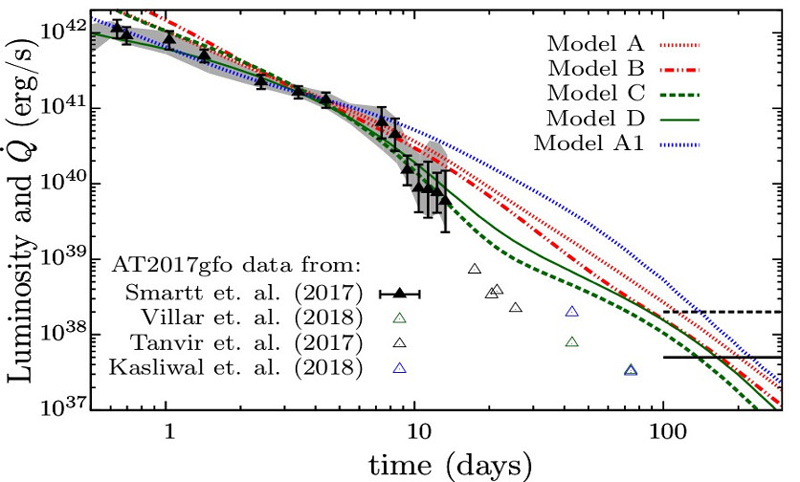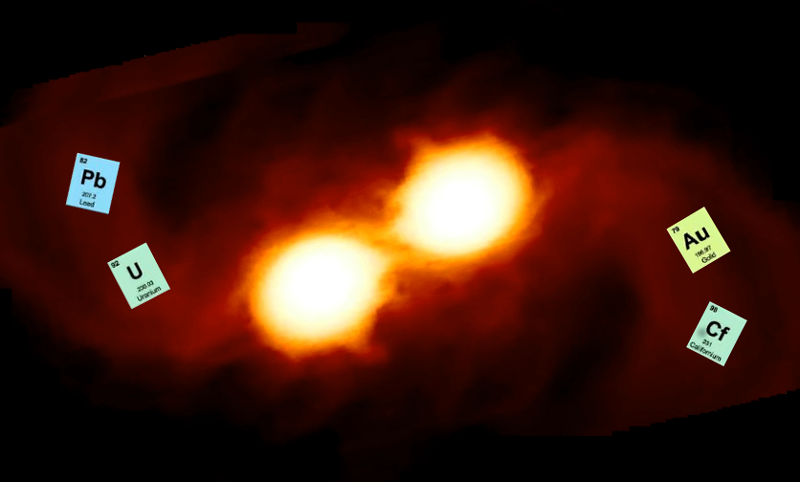Late-time kilonova observations can shed light on the synthesis of nature's heaviest nuclei
The first detection of the simultaneous emission of the gravitational waves and the electromagnetic emission from the merger of two neutron stars on August 2017 has opened a new era of multimessenger astronomy. Among the list of the remarkable achievements made with this single event, the discovery of the “kilonova”, light powered by the radioactive energy release from unstable and neutron-rich nuclei inside the merger debris, has provided the first direct evidence to a long-sought-after question: where in the universe are the heavy elements being formed?
Despite the tremendous success, physicists and astrophysicists are aware of that a definite proof of the existence of the nature's heaviest elements (such as lead, plutonium, thorium and uranium) is still lacking. This is because the observed spectra of the emitted photons within the first ten days after the merger are almost “featureless”, due to the high velocity of the merger debris, faster than one-tenth of the speed of light, blending the absorption and/or emission feature of many nuclei altogether.
In a work lead by Dr. Meng-Ru Wu in the Institute of Physics, Academia Sinica, in collaboration with Dr. Jennifer Barnes and Prof. Brian Metzger in the Columbia University, and Prof. Gabriel Martinez-Pinedo in the GSI Helmholtz Centre for Heavy Ion Research, they calculated how the radiation emitted months after a merger depends on the composition of the radioactive material that the merger ejects, for the first time. Specifically, they show that the decays of certain nuclei, heavier than lead, have an outsize effect on both the magnitude and shape of the light curve of the merger’s electromagnetic counterpart (see Fig 1).
Therefore, future deep, multi-epoch observations using new telescopes, such as the James Webb Space Telescope, with unprecedented sensitivity, could diagnose the presence of particular nuclei in the merger debris cloud. Such observation would not only allow a more detailed understanding of the nucleosynthesis that accompanies the merger than is currently possible from spectral analysis alone, but can also provide the elusive definitive proof of the synthesis of nature's heaviest elements.
This work has been published in Physical Review Letters on February 12, 2019. For more detail, see: https://journals.aps.org/prl/abstract/10.1103/PhysRevLett.122.062701

Figure 1 :Late time kilonova lightcurves with different assumed nuclear compositions in the merger debris. Different models contain distinct nuclear compositions and can be distinguished by future observation.
